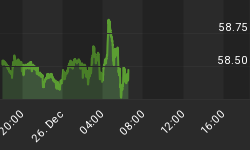8/16/2010 9:06:06 AM
Recommendation: Take no action.
Daily Trend Indications:

- Positions indicated as Green are Long positions and those indicated as Red are short positions.
- The State of the Market is used to determine how you should trade. A trending market can ignore support and resistance levels and maintain its direction longer than most traders think it will.
- The BIAS is used to determine how aggressive or defensive you should be with a position. If the BIAS is Bullish but the market is in a Trading state, you might enter a short trade to take advantage of a reversal off of resistance. The BIAS tells you to exit that trade on "weaker" signals than you might otherwise trade on as the market is predisposed to move in the direction of BIAS.
- At Risk is generally neutral represented by "-". When it is "Bullish" or "Bearish" it warns of a potential change in the BIAS.
- The Moving Averages are noted as they are important signposts used by the Chartists community in determining the relative health of the markets.
Current ETF positions are:
DIA: Short at $105.19
QQQQ: Short at $45.91
SPY: Short at $110.65
Daily Trading Action
The major index ETFs saw another gap down open. They were able to fight their way higher until shortly after 10:00am when the bears took over. The bears moved the major indexes to new intraday lows but they didn't break below Thursday's lows before the bulls reasserted themselves in late morning. From there, it was a modest but steady climb until around 1:30pm when the bears wrested control that would last into the close. Volume gained late in the session as the bears forced all the equity indexes we regularly monitor to close with losses. The S&P-500, Russell-2000, and NASDAQ-100 closed at their intraday lows, matching the morning lows. The leading indexes (NASDAQ-100 (QQQQ 44.72 -0.32), Russell-2000(IWM 61.07 -0.70), and the Semiconductor Index (SOX 322.74 -3.01)) all closed with more significant losses than the Dow (DIA 103.35 -0.10), S&P-500 (SPY 108.31 -0.32), or Bank Index (KBE 22.86 -0.03). The Regional Bank Index (KRE 21.95 -0.20) lost nearly one percent, joining the leading indexes with more significant losses. The NASDAQ Composite, the Semiconductor Index, and the Regional Bank Index all closed at new lows, breaking below the morning intraday lows at the close. The 20+ Yr Bonds (TLT 102.29 +1.26) moved inverse to equities and reached a point just under its 52-week high. NYSE volume was very light with just 870M shares traded. NASDAQ share volume also very light with just 1.610B shares traded.
There were four economic reports of interest released:
- CPI (Jul) rose 0.3% versus an expected 0.2% rise
- Core CPI (Jul) rose 0.1% as expected
- Retail Sales (Jul) rose 0.4% versus an expected 0.5% rise
- Retail Sales excluding Autos (Jul) rose 0.2% as expected
- UofMich Consumer Sentiment (Aug) came in at 69.6 versus an expected 70.0
- Business Inventories (Jun) rose 0.3% versus an expected 0.2% rise
The first four reports were released an hour before the open. The other two were released twenty-five minutes and a half hour after the open respectively. Since the U.S. economic reports tracked close to expectations, they didn't much affect U.S. equity markets.
Instead, U.S. markets fed off the trading in European markets as European bourses closed off about one percent. European markets traded opposite the stronger than expected GDP results, with Germany showing GDP growth of +2.2%.
Utilities (+0.3%) were the only economic sector in the S&P-500 to advance. Retailers sold off -1.4% on the day, in spite of the inline results reported. This saw Consumer Discretionary (-1.1%) followed by Tech (-0.7%). Consumer Staples was unchanged.
Implied volatility for the S&P-500 (VIX 26.24 +0.51) rose two percents while the implied volatility for the NASDAQ-100 (VXN 28.07 +0.44) rose a bit less.
The yield for the 10-year note fell five basis points to close at 2.69. The price of the near term futures contract for a barrel of crude oil fell thirty-five cents to close at $75.39.
Market internals were negative with decliners leading advancers 6:5 on the NYSE and by 9:4 on the NASDAQ. Down volume led up volume by 10:7 on the NYSE and by nearly 11:4 on the NASDAQ. The index put/call ratio fell 0.08 to close at 1.49. The equity put/call ratio rose 0.05 to close at 0.67.
Commentary:
Friday's trading action saw very light volume for the major index ETFs as well as U.S. exchanges. The Dow remains stubbornly above its 50-Day Moving Average (DMA) while all the other equity indexes we regularly monitor are below their 20-DMA, 50-DMA, and 200-DMA. We have been expecting a bounce, which we are getting after gap down opens, even though the major indexes continue to decline.
The Semiconductor Index closed at its lowest point since the early February lows. The intraday low on Thursday touched a supporting downtrend line in place since late May. We will monitor for a break down below that level. The Russell-2000 is also threatening to move to a BEARISH BIAS by the middle of the week and could lead the major indexes to follow. With the long bond threatening to break to new 52-week highs, the stage is set for a large potential slide in equities. We will maintain our short positions as many equity indexes approached oversold conditions.
We hope you have enjoyed this edition of the McMillan portfolio. You may send comments to mark@stockbarometer.com.















